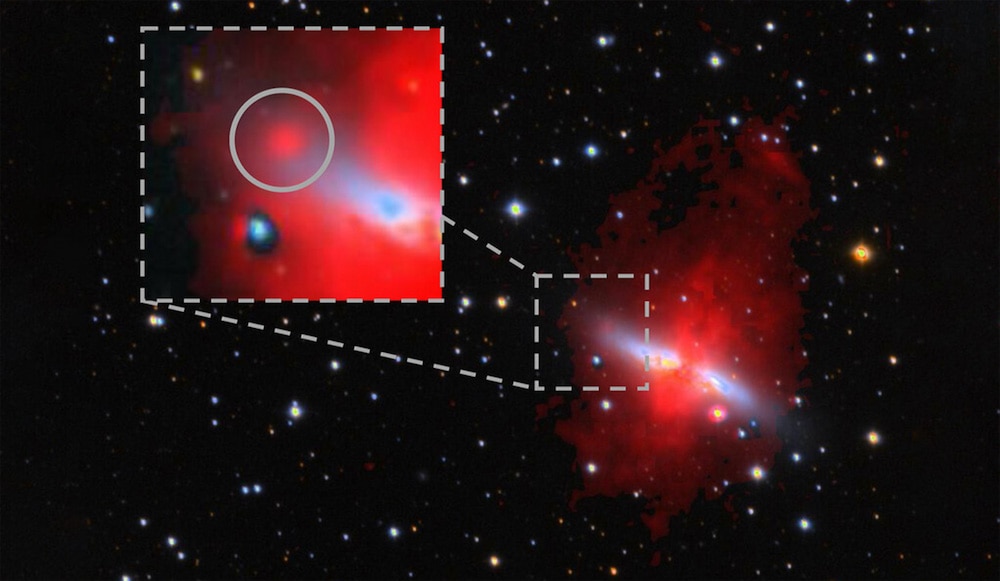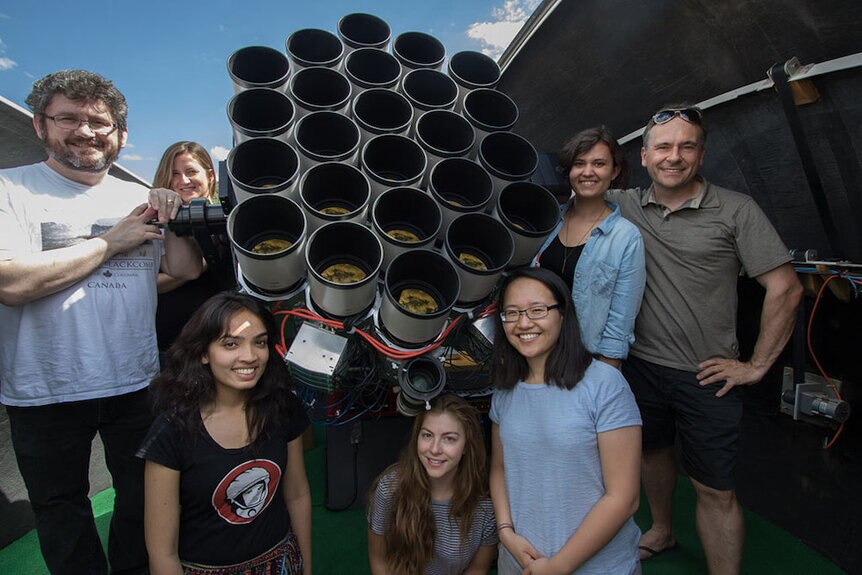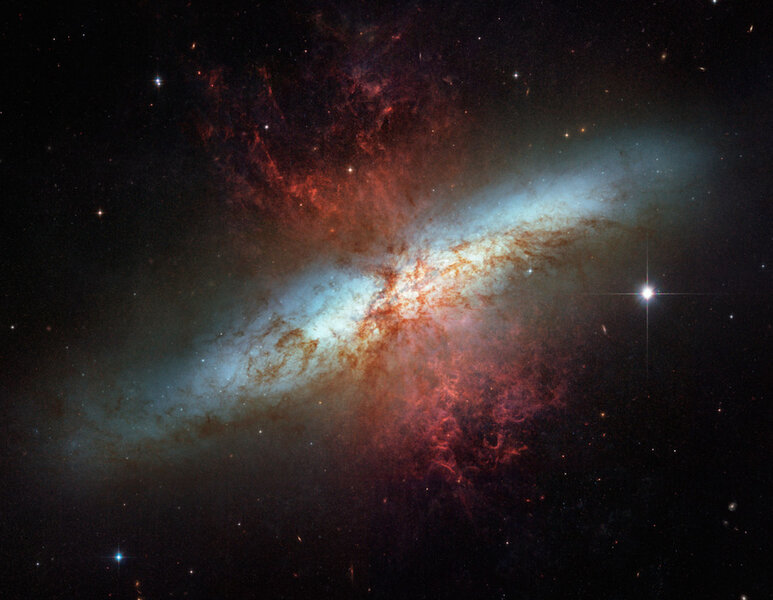Create a free profile to get unlimited access to exclusive videos, sweepstakes, and more!
A nearby galaxy is giving birth to a brand new baby galaxy!
A small galaxy is born from the ripped-out guts of a big one.

It's not often you get to see a galaxy being born. Especially one in our cosmic back yard, and especially especially one that's forming from gas ripped out of another galaxy. Especially-cubed from a galaxy that's incredibly well studied, so this wee baby galaxy was hiding in plain sight all along.
And if I may add one more especially, the discovery was made by a telescope that's not really a telescope in the way you think of them.
The Dragonfly Array is not a single telescope, but actually a collection of 48 Canon telephoto lenses with very sensitive detectors attached that cover a whopping six square degrees of sky, thirty times the size of the full Moon. The advantage of this is that it sees a very large area of sky but can still take really deep images; that is, see very faint detail, and do so at decent resolution — camera nerds like me will find the paper describing the cameras pretty interesting. Also, it's a lot less expensive than creating a telescope with a single lens.
I've written about it a couple of times; the recent very important discovery of two small galaxies that apparently lack dark matter was made using Dragonfly, for example. In those cases the cameras were used in a way that allowed them to see light from across the visible spectrum, from blue light to red.
But the team behind Dragonfly is testing a new idea. They've created a pathfinder version of the array using just three lenses, but they're equipped with a special filter that only allows a very narrow range of wavelengths (colors) to be seen. Hydrogen gas in space can have its atoms excited, energized, by several processes including nearby hot stars, slamming into other clouds, and so on. This gas then emits light at a very specific wavelength, called H-alpha, which is in the red part of the spectrum at 656.5 nanometers.
A filter designed to look at just that wavelength weeds out lots of extraneous light and sees just hydrogen gas (and things like stars, which emit light at all wavelengths, but appear much fainter since most of their light is being rejected by the filters). A wide-field extremely sensitive telescope that sees just hydrogen light can be used to look for star formation and other interesting things in nearby galaxies, but can make sure it sees what's happening all over the place, not just in the galaxy itself.
And that's where this gets fun. Just 12 million light years from Earth is the M81 group, a small clutch of galaxies that's one of the closest in the sky to our Milky Way. M81 is a decently big spiral, and M82 is... weird. It's a spiral galaxy seen nearly edge-on, but you'd never guess that looking at images of it. It looks irregular in shape, as if it's exploding. It's not, but it is what we call a starburst galaxy, one undergoing a seriously intense episode of star birth. So many massive stars are being born in the center that their combined stellar winds are blowing gas clear out of the galaxy.
Also, a few hundred million years ago, a close pass with nearby M81 drew a lot of gas out from M82, the gravity of the bigger galaxy creating long streamers from M82 called tidal tails.
All this makes this region of the sky a perfect target for the test version of the filtered Dragonfly array. In the spring of 2020 they made hundreds of observations, in the end creating an H-alpha image with a total exposure of 95 hours, which is staggering.
Just at the edge of the disk of M82 they saw a bright blob of H-alpha emission, which they named DF-E1 — Dragonfly Emission source 1, the first emitter of H-alpha discovered by the small array. It overlaps one of the tidal tails from M82, and this makes it very likely to be gas condensing after being torn away. DF-E1 is about 1,000 light years across, and very bright, shining with the light of 25,000 Suns just in the narrow color of H-alpha!
M82 is a very well observed galaxy, so they looked at archived observations from Hubble and GALEX, the latter of which mapped the sky in ultraviolet wavelengths typically emitted by young, hot stars. They found several small knots in DF-E1 that they conclude are young star clusters forming from the gas they see. Radio telescopes also show there's a lot of cold atomic and molecular hydrogen gas there as well, indicating again that the gas is cooling and likely forming stars.
Spectra taken using the huge Keck telescope in Hawaii were used to determine the velocity of DF-E1, and they find it's moving relative to M82 at about 75 kilometers per second (though with some uncertainty in that figure), fast enough that it is very likely not bound to the galaxy; that is, it's probably not going to slow and fall back in. If so it's independent of M82, what we call kinematically decoupled.
The total mass just in gas is about 50 million times the Suns mass. All together, this information makes it likely that DF-E1 is a galaxy in its own right, if a small one.
What is the fate of this shiny new galaxy? Well it may yet fall back onto M82, since the velocity isn't perfectly well determined. But if it doesn't it will most likely join the group of other small galaxies in the M81 Group.
And the beauty here is that DF-E1 is so close to us, cosmologically speaking, that it will be easy to observe and examine. It's not a bad bet to assume that many more telescopes will be used to take a look at it and see what else we can learn from it. It's a brand new baby galaxy, born from the guts ripped out of M82, and we can watch it as it happens!





























